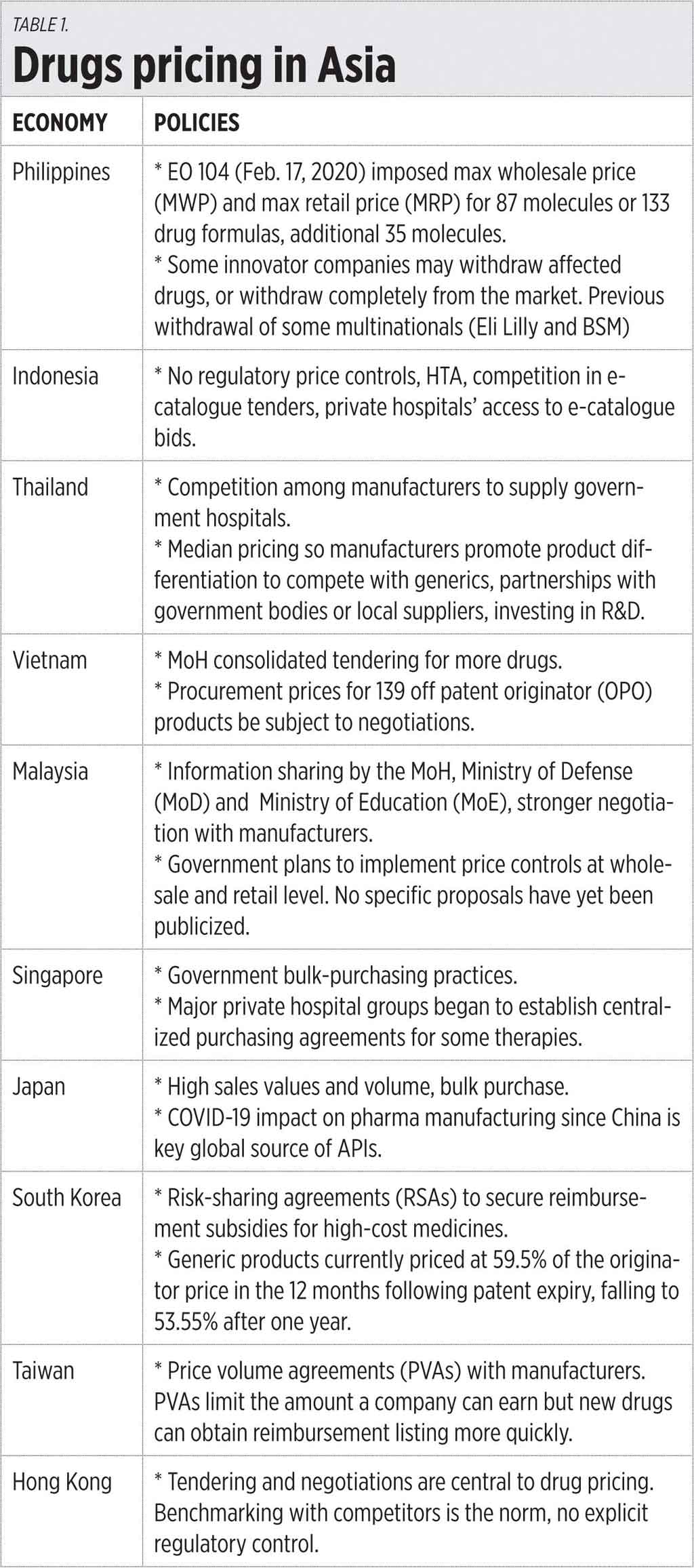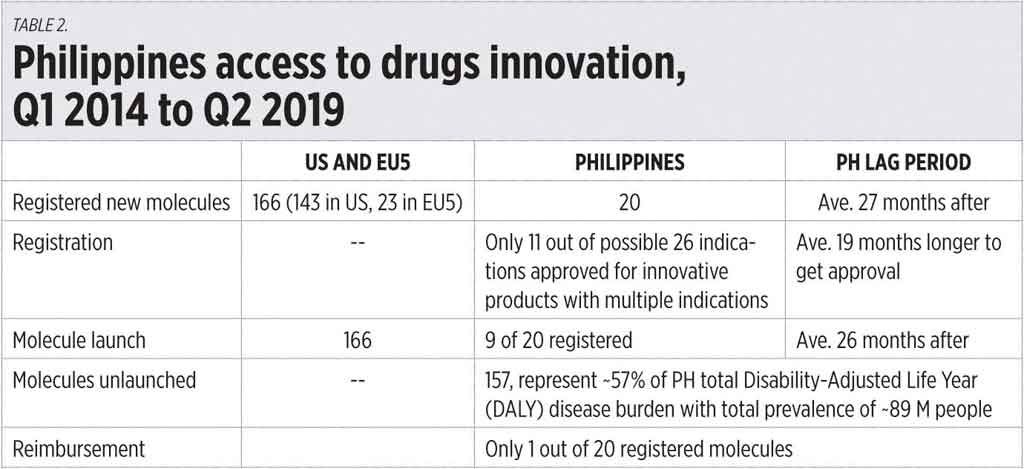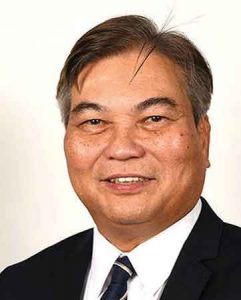Drug pricing in Asia and WHO assembly
As the COVID-19 global pandemic lingers, the search for new medicines and vaccines continues as existing treatments and medicines cannot cope with virus mutation. Public policies on the pricing of innovative, newly invented medicines and vaccines are among the important considerations, whether these new treatments will become available in certain countries or not.
I checked the drug pricing policies of our neighbors in the ASEAN and developed Asia. A friend showed me a copy of the latest quarterly report of IQVIA (formerly IMS Health) as it is a by-subscription paper only. Only the Philippines instituted a new drug price control policy, Malaysia plans to have one but no details are available at the moment. The rest use mechanisms that are more market-oriented and not coercive (see Table 1).
February’s EO 104, which imposed a max wholesale price and a max retail price for certain drugs, is on top of drug price control under EO 821 (July 2009, Gloria Arroyo administration) which remains in effect until today.
IQVIA also produced a country report on “Access to Innovation.” The main objective of the study is to understand the Philippines’ access to innovative medicines. I am thankful to another friend who shared with me that by subscription-only report.
The result is not good – so many new medicines, more disease-killing treatments are available in the developed world but are either not available in the Philippines, or made available only after more than two years (see Table 2).
The old EO 821 price control, threats of patent-confiscation via compulsory licensing, and endless attempts to have another round of drug price control, are among the factors why this thing happens.
There is a possibility — a danger — that when new treatments and vaccines are available against COVID-19 by early 2021, they may not be made available in the Philippines because of existing policies like price controls that penalize innovators.
President Rodrigo Duterte, Health Secretary Francisco Duque III, Senator Bong Go and other the other senators that pushed for price controls should be aware of the dangers of their policy. There are many mechanisms that government can take to have cheaper medicines like more competition among more innovators, negotiated pricing, bulk purchase, RSAs and PVAs, as shown in Table 1e.
On May 18, the member states of the World Health Organization (WHO) will gather in Geneva for the World Health Assembly and they will discuss new policies to fight the COVID-19 pandemic, among others.
That same day, a global coalition of 31 independent, non-government think tanks will release a new report, “A Joint Declaration on the Importance of Collaboration, Open Trade, and Innovation in Tackling COVID-19” (May 2020). Of these 31 think tanks, five are from the ASEAN: CIPS and Paramadina Institute (Indonesia), the Galen Center and KSO Institute (Malaysia), the Adam Smith Center (Singapore), and Minimal Government Thinkers (Philippines).
Our paper suggests seven simple measures that governments can make to save more lives now:
1. Abolish tariffs on medical supplies and medicines;
2. Reject export bans on medical supplies;
3. Reduce Customs red tape;
4. Enable the free flow of relevant health data across borders;
5. Maintain transparency in collecting and sharing epidemiological data;
6. Increase cooperation with other countries to speed up drug approval; and,
7. Support innovation, including intellectual property rights.
We hope that member-governments of WHO will consider these points. Private investments and research have a natural inclination to find new solutions to old and emerging problems, they just need to be unshackled from various restrictions, regulations, and high taxation by governments.
Bienvenido S. Oplas, Jr. is the president of Minimal Government Thinkers.




